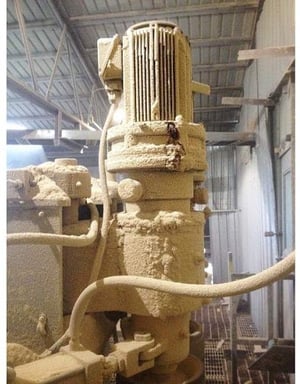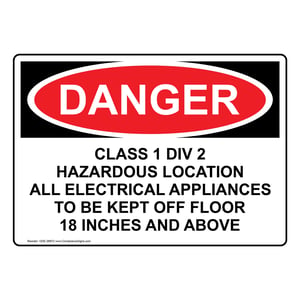Part 32 in a series of questions and answers from our Q&A webinars.
Q: Is there a spark risk for a dusty sawmill application?
A: An AEGIS® ring mounted on the outside of the motor could increase the risk. It would probably be safe, but "probably safe" isn't really safe enough.
Instead of mounting outside, it would be best to install the ring inside the motor. Not only for spark risk, but to avoid fouling the ring's fibers.
Internal installation is one of AEGIS rings' biggest advantages. Other shaft grounding devices need to be adjusted or replaced; AEGIS is rather a "set & forget" solution. It can be installed in a motor & then not worried about.
Q: In a harsh environment with oil or grease on the shaft, after a while the AEGIS ring gets dirty. How do we get the grease off?
A: It depends how much contamination we're talking about. The ring would fail if it were flooded, with grease or water or other liquid. In these applications, we highly recommend installing inside the motor. Motor OEMs install rings inside their motors, and motor repair shops also often install rings inside.
As for cleaning: the conductive microfibers can be cleaned with solvents like alcohol or acetone. Some people use gasoline, though we don't recommend that. Typically, if it's gotten to the point where you need to clean the ring, we really suggest moving it to inside of the motor.
Other options include external installation with a rubber O-ring on the shaft to screen the fibers from grease. There are also bearing isolators with shaft grounding rings inside, made by Garlock, Flowserve, and AESSeal.
Q: What is the life expectancy of the SGR?
A: The ring's lifetime is based on the L10 lifetime of a standard rolling element bearing, which is 100k hours for with a shaft of 6" or less. That's the ring's minimum lifetime; lab tests indicate more like 200k hours.
But this all depends on the condition of the shaft surface, and on its size. The larger the shaft, the higher the surface velocity. (The surface of a 6" shaft moves faster than the surface of a 3" shaft if they're both spinning at the same rpm.)
We visited a power plant with 17.5" shaft at 3600 rpm. In that case, the total distance rate estimated a lifetime of 5.5 years. They were happy to hear that, since they had been using springloaded carbon brushes that only lasted 2 weeks.
Q: What about Class 1 Div 2 environments?
A: All shaft grounding devices are classified as arcing devices. Obviously electrical arcing in a potentially explosive atmosphere is not allowed. Today though, there are motor manufacturers (Marathon (Regal), WEG, & Baldor (ABB)) who offer AEGIS rings installed inside the motor for explosion proof motors for Class 1, Div 1 environments. There are also about 30 different motor repair companies that can install an AEGIS ring in this way, and then nameplate it as Class 1 Div 1-capable.
As for Class 1, Div 2: You can use an XP motor here, though you may not want to go full-on XP. Usually you would use an IEEE-841 motor, a Class 1 Div 2-capable motor. Shaft grounding is allowed in these environments, provided that certain calculations have been done to show safety. You can get the fuller story in this post.
Q: If you're using a bearing isolator without an SGR, where does the shaft current go?
A: Through the bearings. Bearing isolators prevent contamination from getting into the bearing, but that's all they do. They don't protect the bearings from electrical damage, unless they have an integrated AEGIS ring. Again, there are three seal companies that offer seals with integrated shaft grounding rings: Garlock, Flowserve, & AESSeal.
AEGIS Rings also come with a 2-year extended warranty against bearing fluting damage. No other form of protection against VFD-caused bearing damage offers a warranty like this.

To learn more about AEGIS shaft grounding and best practices for electrical bearing protection, sign up for a training. We offer monthly live training webinars, and - pandemic restrictions permitting - we can also visit your facility to review your exact application.


